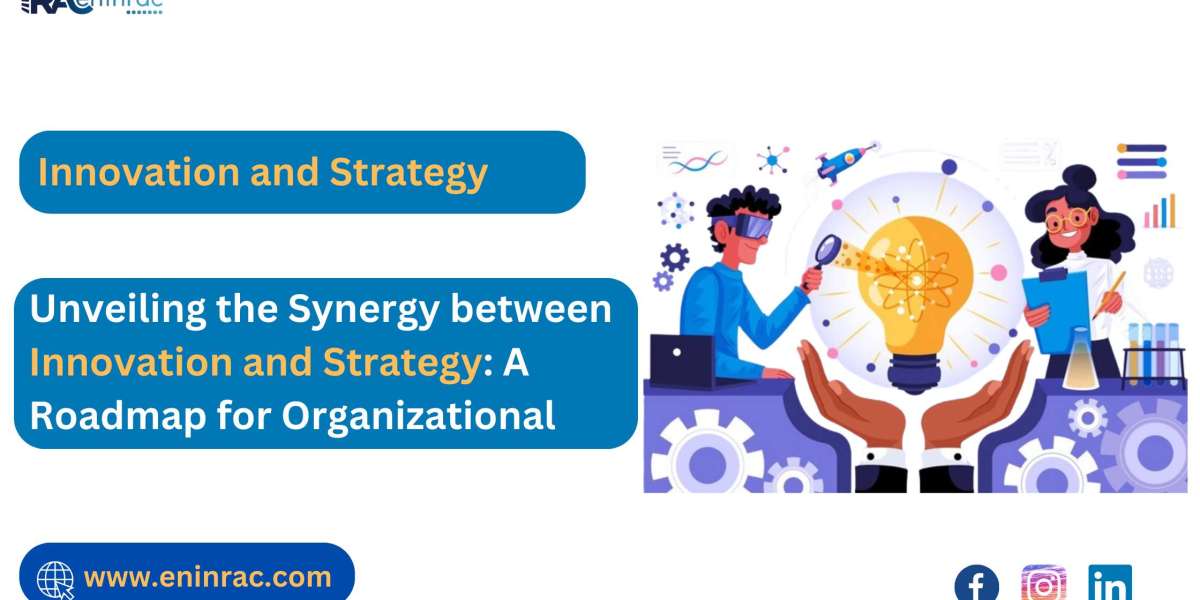Innovation and strategy are the twin engines that propel organizations toward growth, sustainability, and competitive advantage in today’s dynamic business environment. While innovation drives the creation of new ideas, products, and processes, strategy provides the framework for guiding these innovations towards achieving organizational goals. In this comprehensive exploration, we delve into the symbiotic relationship between innovation and strategy, unveiling the key principles, best practices, and real-world examples that underscore their critical importance in driving organizational success.
Understanding Innovation and Strategy
Innovation:
At its core, innovation encompasses the process of transforming ideas into valuable products, services, or processes that meet customer needs or create new market opportunities. It involves creativity, experimentation, and a willingness to challenge the status quo. Whether it’s disruptive innovations that revolutionize industries or incremental improvements that enhance existing offerings, innovation is the lifeblood of organizational growth and evolution.
Strategy:
Strategy, on the other hand, involves the formulation and execution of plans and initiatives aimed at achieving long-term objectives. It encompasses decisions regarding resource allocation, market positioning, competitive differentiation, and risk management. A well-crafted strategy provides a roadmap for navigating uncertainties, capitalizing on opportunities, and mitigating threats in the external environment.
The Interplay between Innovation and Strategy
1. Alignment of Goals:
A successful innovation strategy begins with a clear understanding of organizational goals and objectives. By aligning innovation initiatives with strategic priorities, companies can ensure that their efforts are focused on creating value, driving growth, and enhancing competitiveness in the marketplace.
2. Fostering a Culture of Innovation:
Strategy plays a crucial role in shaping the organizational culture and fostering an environment that encourages creativity, experimentation, and risk-taking. By establishing a culture of innovation, companies can unleash the creative potential of their employees, empower teams to pursue new ideas, and drive continuous improvement across the organization.
3. Portfolio Management:
Effective strategy involves managing a portfolio of innovation projects that balance short-term objectives with long-term aspirations. By diversifying investments across different types of innovations—such as incremental, breakthrough, and disruptive—companies can hedge risks, optimize resource allocation, and maximize returns on investment over time.
4. Market Sensing and Adaptation:
Strategy provides the framework for scanning the external environment, identifying emerging trends, and anticipating changes in customer preferences, competitive dynamics, and technological advancements. By incorporating market insights into the innovation process, companies can adapt quickly to evolving market conditions and seize opportunities ahead of competitors.
Best Practices for Integrating Innovation and Strategy
1. Leadership Commitment:
Successful integration of innovation and strategy requires strong leadership commitment and vision. Leaders must champion innovation from the top-down, communicate a clear strategic direction, and empower teams to pursue innovative ideas aligned with organizational goals.
2. Cross-Functional Collaboration:
Innovation thrives in an environment where diverse perspectives converge, and cross-functional collaboration flourishes. By breaking down silos, fostering collaboration between R&D, marketing, operations, and other functional areas, companies can accelerate the pace of innovation, drive synergies, and deliver holistic solutions that address customer needs comprehensively.
3. Customer-Centricity:
Innovation should be driven by a deep understanding of customer needs, pain points, and aspirations. By adopting a customer-centric approach to innovation, companies can develop products and services that resonate with their target audience, deliver superior value, and foster long-term customer loyalty.
4. Agile Execution:
In today’s fast-paced business environment, agility is essential for successful innovation. Companies must embrace agile methodologies, iterate quickly, and learn from failure to adapt to changing market conditions and capitalize on emerging opportunities.
Real-World Examples of Successful Innovation Strategies
1. Apple Inc.:
Apple’s relentless focus on innovation has propelled it to become one of the most valuable companies in the world. From the introduction of the iPhone, iPad, and Macbook to the creation of revolutionary retail experiences like the Apple Store, Apple has consistently disrupted industries and redefined consumer expectations through innovative products and services.
2. Tesla Inc.:
Tesla’s strategy of combining electric vehicles with cutting-edge technology and sustainable energy solutions has revolutionized the automotive industry. Through continuous innovation in battery technology, autonomous driving, and renewable energy infrastructure, Tesla has established itself as a leader in the transition towards a sustainable future.
3. Procter & Gamble:
Procter & Gamble’s “Connect+Develop” open innovation model has enabled it to collaborate with external partners, universities, and startups to drive product innovation and accelerate time-to-market. By leveraging external expertise and resources, P&G has been able to expand its product portfolio, enter new markets, and stay ahead of competitors in the fast-moving consumer goods industry.
Conclusion: Embracing the Power of Innovation-Driven Strategy
Innovation and strategy are not mutually exclusive concepts but rather two sides of the same coin. By integrating innovation into strategic decision-making processes, organizations can unlock new growth opportunities, drive sustainable competitive advantage, and thrive in an increasingly complex and competitive business landscape. As we navigate the challenges and uncertainties of the future, the synergy between innovation and strategy will continue to serve as a cornerstone of organizational success, enabling companies to adapt, evolve, and flourish in the face of change.
More market research, advisory consulting services to discover
At Eninrac, we offer a wide range of, advisory consulting solutions, from We put ‘search’ in research to help expand your business with ease. Discover all the possibilities now.



